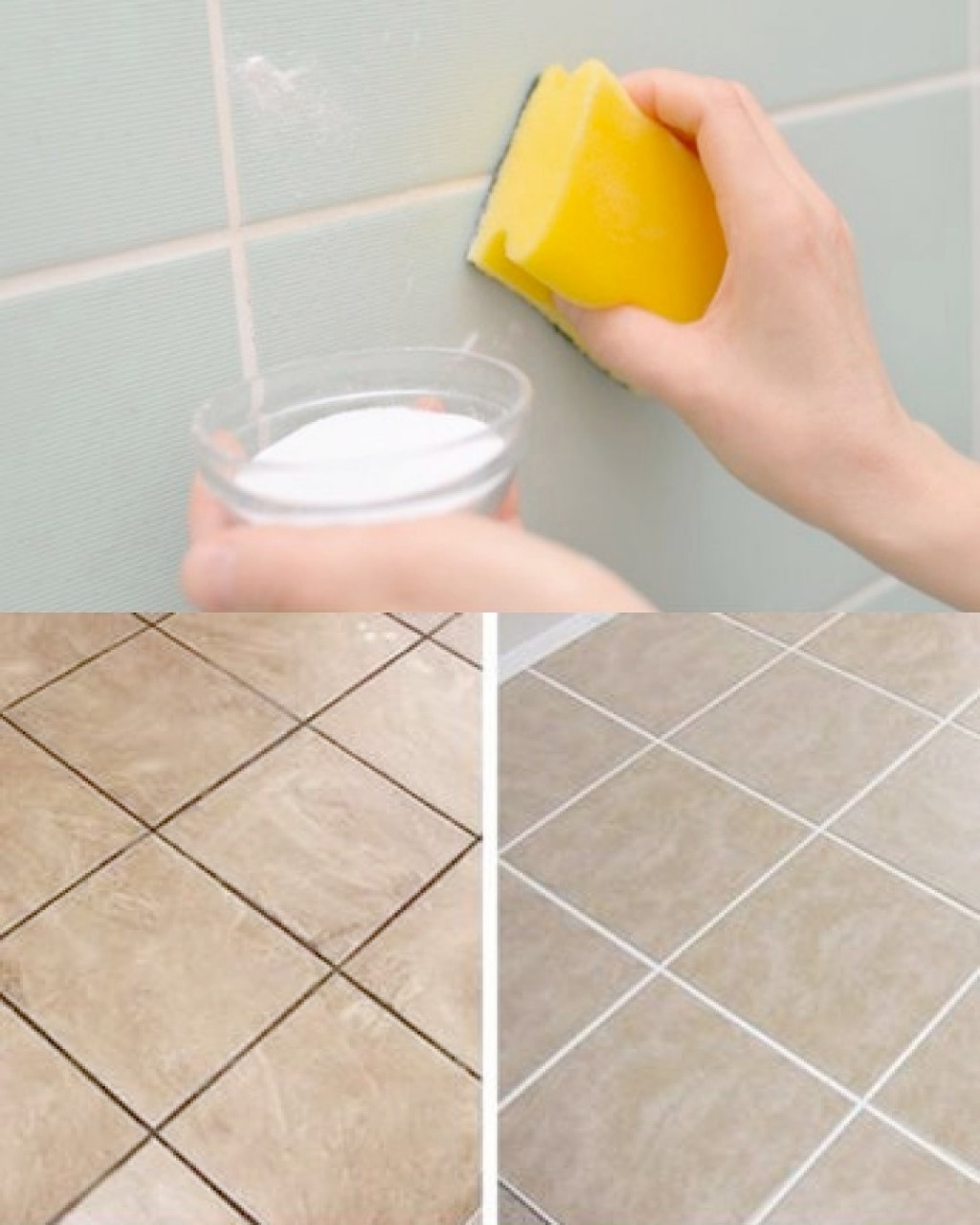ADVERTISEMENT
Step-by-Step Instructions:
1. Basic Baking Soda Paste for Cleaning Tiles
For a quick and easy solution, start by making a simple baking soda paste. This is great for cleaning both tiles and grout effectively.
- Step 1: Mix a small amount of baking soda with a little warm water in a bowl to create a thick paste. The consistency should be thick enough that it sticks to the surface but not so thick that it’s difficult to spread.
- Step 2: Using a microfiber cloth or a soft sponge, apply the paste directly onto the tile surface. Focus on areas that are particularly dirty, stained, or dull. Be sure to cover the grout lines as well, as baking soda is great at lifting built-up grime from them.
- Step 3: Let the paste sit for about 10-15 minutes. This gives the baking soda time to break down grease and grime.
- Step 4: After the waiting period, gently scrub the tiles using the cloth or sponge. For stubborn spots or grout lines, use an old toothbrush to get into the cracks and crevices.
- Step 5: Wipe away the paste with a clean, damp cloth. You should immediately notice a cleaner, shinier surface!
2. Baking Soda and Vinegar for Extra Tough Grime
If your tiles are in need of a deeper clean or have built-up grime that won’t come off with the paste alone, try combining baking soda and white vinegar—two cleaning powerhouses that, when used together, can make your tiles sparkle.
- Step 1: Sprinkle baking soda generously over the dirty tile surface. You can also sprinkle it in the grout lines if they’re particularly dirty.
- Step 2: Next, spray or pour white vinegar over the baking soda. The vinegar will create a fizzing reaction that lifts dirt and debris from the tiles and grout.
- Step 3: Let the mixture sit for 5-10 minutes, allowing the fizzing action to work its magic. The combination of vinegar and baking soda breaks down tough stains, soap scum, and grease, leaving your tiles looking fresh.
- Step 4: Use a soft cloth or sponge to scrub the tiles. For grout lines, a toothbrush is the best tool to get into tight corners.
- Step 5: Wipe away the residue with a clean, damp cloth and buff the tiles to a shine with a dry cloth.
3. Using Baking Soda for Tile Floor Cleaning
If you need to clean larger areas, like tile floors, here’s how to use baking soda in a bucket for a quick floor wash.
- Step 1: Fill a bucket with warm water and add 1/4 cup of baking soda. Stir the water to help dissolve the baking soda.
- Step 2: Dip a mop or microfiber cloth into the solution and wring it out. Mop the floor, working in sections. Baking soda works wonders for lifting dirt, grease, and even watermarks.
- Step 3: After mopping the floor, use a clean cloth to wipe down any excess moisture. This will help leave the tiles with a streak-free shine.
4. Using Baking Soda for Tile Grout Cleaning
Grout lines can be one of the hardest areas to clean, but baking soda is here to help!
- Step 1: Create a paste with baking soda and water. You can add a little vinegar to the paste for extra cleaning power if needed.
- Step 2: Apply the paste to the grout lines using a toothbrush or a small scrub brush. Let it sit for about 10 minutes to loosen grime.
- Step 3: Scrub the grout with the brush, focusing on areas with the most buildup. Baking soda’s mild abrasiveness will help scrub away dirt without damaging the grout.
- Step 4: Wipe the grout clean with a damp cloth, and admire your newly brightened grout lines.
Additional Tips for Shining Tiles:
- Buff with a Dry Cloth: After cleaning, buff your tiles with a dry, clean cloth to add an extra shine.
- Regular Maintenance: To keep tiles sparkling, use baking soda for regular cleaning, especially in high-moisture areas like kitchens and bathrooms. A weekly cleaning routine will help prevent grime buildup.
- Test in Small Areas: Always test any cleaning solution on a small, inconspicuous area of the tile to make sure it doesn’t damage or discolor the surface.
Why Choose Baking Soda for Tile Cleaning?
- Non-Toxic and Safe: Baking soda is an environmentally friendly, non-toxic cleaning option, making it safe to use around children and pets.
- Inexpensive: Compared to store-bought tile cleaners, baking soda is a low-cost alternative.
- Natural Deodorizer: In addition to cleaning, baking soda can help neutralize any odors in your bathroom or kitchen, leaving your tiles smelling fresh.
- Effective and Gentle: Baking soda’s mild abrasive quality makes it effective for cleaning tiles without scratching or damaging them.
Final Thoughts
Baking soda isn’t just for baking—it’s a powerhouse when it comes to cleaning tiles and grout! Whether you’re looking to clean, remove stains, or add shine, this simple ingredient can do wonders without the use of harsh chemicals. It’s safe, effective, and budget-friendly, making it the perfect choice for anyone looking to keep their tiles sparkling clean and fresh. Give it a try next time you need to clean your tiles—you’ll be amazed at the results!
